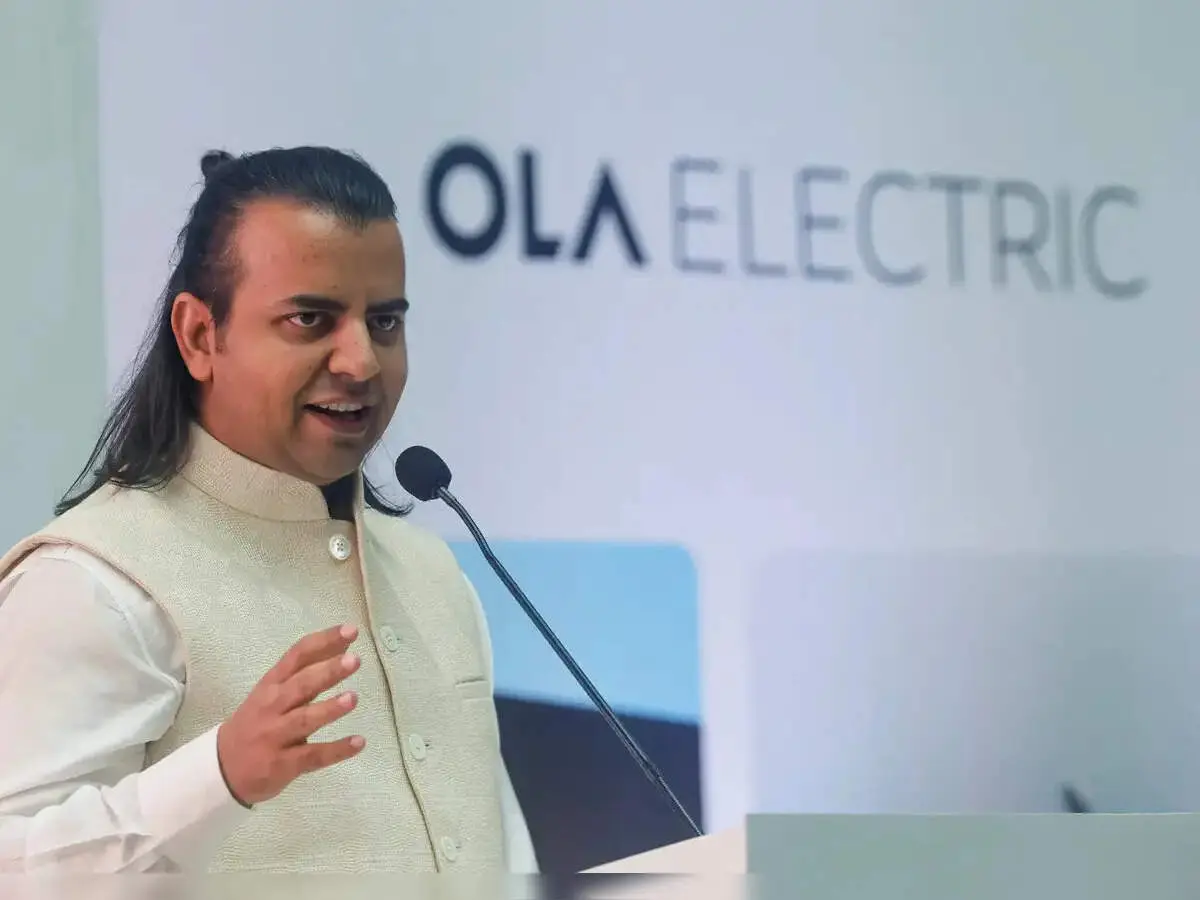Bengaluru: Ola Electric has achieved compliance certification under the Production Linked Incentive (PLI) scheme for its Gen 3 scooter range. This significant milestone qualifies the company for incentives of 13% to 18% of sales value until 2028. The certification, provided by the Automotive Research Association of India (ARAI), aims to boost domestic manufacturing in the electric mobility sector amidst heightened competition and signals a potential path to profitability for the firm.
- Ola Electric’s PLI Certification: A Strategic Move Towards Profitability
- Market Position and Competition: The Challenges Ahead
- Financial Performance: Navigating Losses and Future Strategies
- The Bigger Picture: Impact on the Indian Economy
- 💡 Bankerpedia’s Insight
- 🤔 What Does This Mean for Me?
- 📚 Research References
Ola Electric’s PLI Certification: A Strategic Move Towards Profitability
Ola Electric, a prominent player in the electric two-wheeler market, has recently secured compliance certification under the Production Linked Incentive (PLI) scheme for its Gen 3 scooter portfolio. This development offers the company the opportunity to receive significant financial incentives, spanning from 13% to 18% of the sales value of these scooters until 2028. The certification, which covers all seven variants of Ola’s Gen 3 scooters, including popular models like the S1 Pro and S1 X series, marks a crucial step towards enhancing the company’s cost structure and profit margins.
A spokesperson for Ola Electric emphasized the importance of this certification, stating, “Securing PLI certification for our Gen 3 scooters, which form the bulk of our sales, is a critical step towards profitability. This will directly strengthen our cost structure and margins, enabling us to deliver sustainable growth.” This initiative comes at a pivotal time, as the company has been grappling with a declining market share, facing stiff competition from established players such as TVS Motor and Ather Energy.
Market Position and Competition: The Challenges Ahead
As of late August, Ola Electric recorded a market share of 17.3% in the electric two-wheeler market, trailing behind legacy competitor TVS Motor, which holds a share of 25.2%, and Ather Energy at 17.9%, according to data from the Vahan portal. This decline can be attributed to increased competition, as rival brands continue to ramp up their sales, putting pressure on Ola to rethink its strategies and offerings.
To regain momentum in this competitive landscape, the company has launched several new products at its annual Sankalp event, including the indigenously manufactured 4680 Bharat cell battery and a unique rare-earth metal-free motor. Additionally, they unveiled the new S1 Pro+ scooter, reducing its price from Rs 199,999 to Rs 169,999, and the Roadster X+, featuring a range of 501 km, which saw a price reduction from Rs 224,999 to Rs 189,999. These moves aim not only to enhance product appeal but also to attract a larger customer base facing competitive options.
Financial Performance: Navigating Losses and Future Strategies
On the financial front, Ola Electric recently reported its quarterly earnings, revealing a net loss of Rs 428 crore for the April-June quarter, an increase from the Rs 327 crore loss in the same period last year. Despite this rise, it is a notable improvement compared to the staggering Rs 870 crore loss recorded in the March quarter. The company posted operating revenue of Rs 828 crore, almost half of the Rs 1,644 crore reported a year prior, reflecting the need for improved operational efficiencies.
In response to these losses, Ola Electric is pivoting its focus towards capital discipline and risk management. This shift could be vital for the company as it navigates the challenges posed by competition and fluctuating market dynamics. Last week, Ola Electric gained shareholders’ approval to reallocate proceeds from its initial public offering (IPO) and extended the timeline for deployment in its first annual general meeting since its listing. This strategic move reflects a commitment to maintaining transparency with stakeholders while reinforcing strategic financial planning.
The Bigger Picture: Impact on the Indian Economy
The PLI scheme for automobiles and auto components was launched in 2021 with a budgetary allocation of Rs 25,938 crore, aimed at boosting domestic manufacturing of advanced automotive technologies, including electric mobility. This initiative stands to have a considerable impact on the Indian economy, driving innovation and creating job opportunities in a rapidly evolving sector. With companies like Ola Electric leading the charge in electric vehicles, there is hope for sustainable growth in the market, providing eco-friendly alternatives to conventional transportation methods.
As the electric two-wheeler market continues to mature, companies unable to adapt may face hurdles, while those like Ola who are willing to innovate could reshape the landscape entirely. With the financial backing of the PLI scheme and proactive measures to enhance their product offerings, Ola Electric appears poised not only to recover but potentially to lead in the electric mobility revolution in India.
In conclusion, while there are challenges on the road ahead, Ola Electric’s latest developments, from PLI certification to new product launches, signal its determination to reclaim its position in the market and bolster the electric mobility segment of the Indian economy. The company’s journey exemplifies the broader trends reshaping the automotive landscape, making it an exciting space to watch in the coming years.
💡 Bankerpedia’s Insight
Ola Electric’s recent compliance certification under the Production Linked Incentive scheme is a pivotal development for India’s electric mobility sector. By securing incentives, Ola can bolster its cost structure, enhancing profitability potential amidst fierce competition. This bodes well for both investors and consumers, encouraging innovation and price competitiveness in electric two-wheelers. As market dynamics shift, consumers should remain vigilant to seize opportunities for affordable, sustainable transportation options. With profitability on the horizon, Ola’s strategy could reshape India’s electric vehicle landscape, making it more accessible and appealing.
🤔 What Does This Mean for Me?
- Salaried Person → Potential for more affordable electric scooters in market.
- Business Owner → Increased profit potential and competitive advantage for business.
- Student → Electric scooters may become more affordable for students.
- Self-employed → Potential lower costs for electric scooters and increased sales.
- Homemaker → Potentially lower electric scooter prices for homemakers.
- Retiree / Senior Citizen → Lower-priced scooters may benefit senior citizens’ mobility.
- Job Seeker → Increased job opportunities in electric vehicle manufacturing sector.
- Farmer / Rural Citizen → Increased electric scooter affordability for rural transportation needs.
📚 Research References
- economictimes.indiatimes.com
- RBI
- SEBI
- Ministry of Finance
- NABARD
- Department of Financial Services (DFS)
📲 Stay ahead in banking & finance!
Join the Bankerpedia WhatsApp Channel for instant updates, and
subscribe to our YouTube Channel for in-depth analysis and expert explainers.










